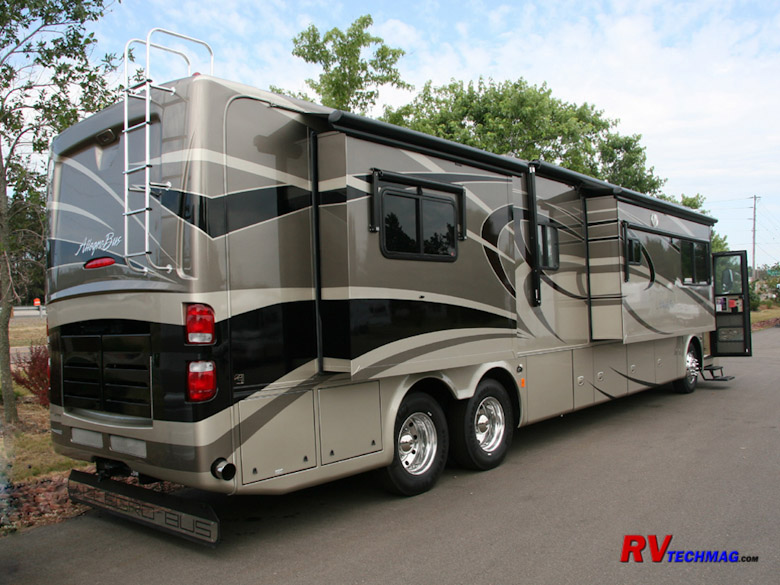Understanding Fault Codes
How to Read and Interpret Fault Codes in your Diesel Powered Motorhome
Article Date: August, 2017
Article and Photography by Mark Quasius

You're happily driving along when suddenly your Check Engine light comes on or the dash display lights up with an
error message. Panic sets in. Is the engine going to blow up or is this just an annoying code that will go away? Many of the latest systems
have the ability to display Diagnostic Trouble Codes, or DTCs. If not immediately available, a code reader can plug into the diagnostic port to
retrieve them. Heavy duty diesel engines utilize the J1939 protocol to communicate across the data buss, which also is used to perform
diagnostics. Allison transmissions also communicate along this buss and the latest Gen IV transmissions can display fault codes via the
transmission shift control panel. This J1939 buss is used by the chassis manufacturer and also interfaces with various chassis elements, such
as antilock braking systems, traction control, headlights and other accessories.
The most common engine used in class A diesel powered motorcoaches is the Cummins diesel. Ranging in size from the 6.7 liter
ISB up to the 15 liter ISX, these engine easily make up the vast majority of the market. The EPA 2010 emissions standards added more complexity as
Selective Catalytic Reduction (SCR) was added to the Diesel Particulate Filter (DPF) emissions equipment used since the EPA2007 regulations came in
effect. This creates a whole new series of fault codes relating to the emissions system that was updated in 2013.
SPN and FMI
Odds are the first thing you will see when retrieving a diagnostic code from a J1939 buss is a SPN number and an FMI number.
These numbers can be confusing at first but once you understand them they aren't so bad. The SPN is the Suspect Parameter Number. This basically indicates
what area the code originated from, in other words - where the problem is. The FMI is the Failure Mode Indicator, which describes what the problem is. In
addition to the SPN and FMI numbers you may see a warning lamp light up on the dash and a Malfunction Indicator Lamp (MIL) may also be illuminated and vary
between an amber or red color, depending on the severity of the problem. You may have additional icons that will display as well. Mostly these are related to
emissions, such as low DEF or regeneration status.
FMI numbers remain the same regardless of which SPN they are attached to. For example, an FMI of 4 indicated low voltage while an
FMI of 3 indicates high voltage. If any sensor receives low voltage due to a bad connection or any other reason it will have an FMI of 4. Failure Mode
Indicators are helpful in that they identify what the issue is. Without FMIs you would be able to know that there is an issue with a particular component (SPN)
but you wouldn't know what the issue was.
Allison Transmission DTCs
Allison's latest Gen IV transmissions have extensive diagnostic capabilities. DTCs can be retrieved from the transmission shift
keypad. This is covered in more details in my Allison Transmission Prognostics
article.
Code Charts
Following is a list of various engine and transmission DTC codes.
I also recommend that you download a copy of the Cummins Quickserve app to your smart phone. This app provides a
number of functions pertinent to your engine. It's a free download from your phone's app store and will give you more detailed information to help
you understand what the diagnostic code means and how severe it is.
Return to Home Page
If you enjoyed this article be sure to recommend RVtechMag.com to your friends, like us on Facebook or Twitter
or subscribe to our RSS feed.



|





